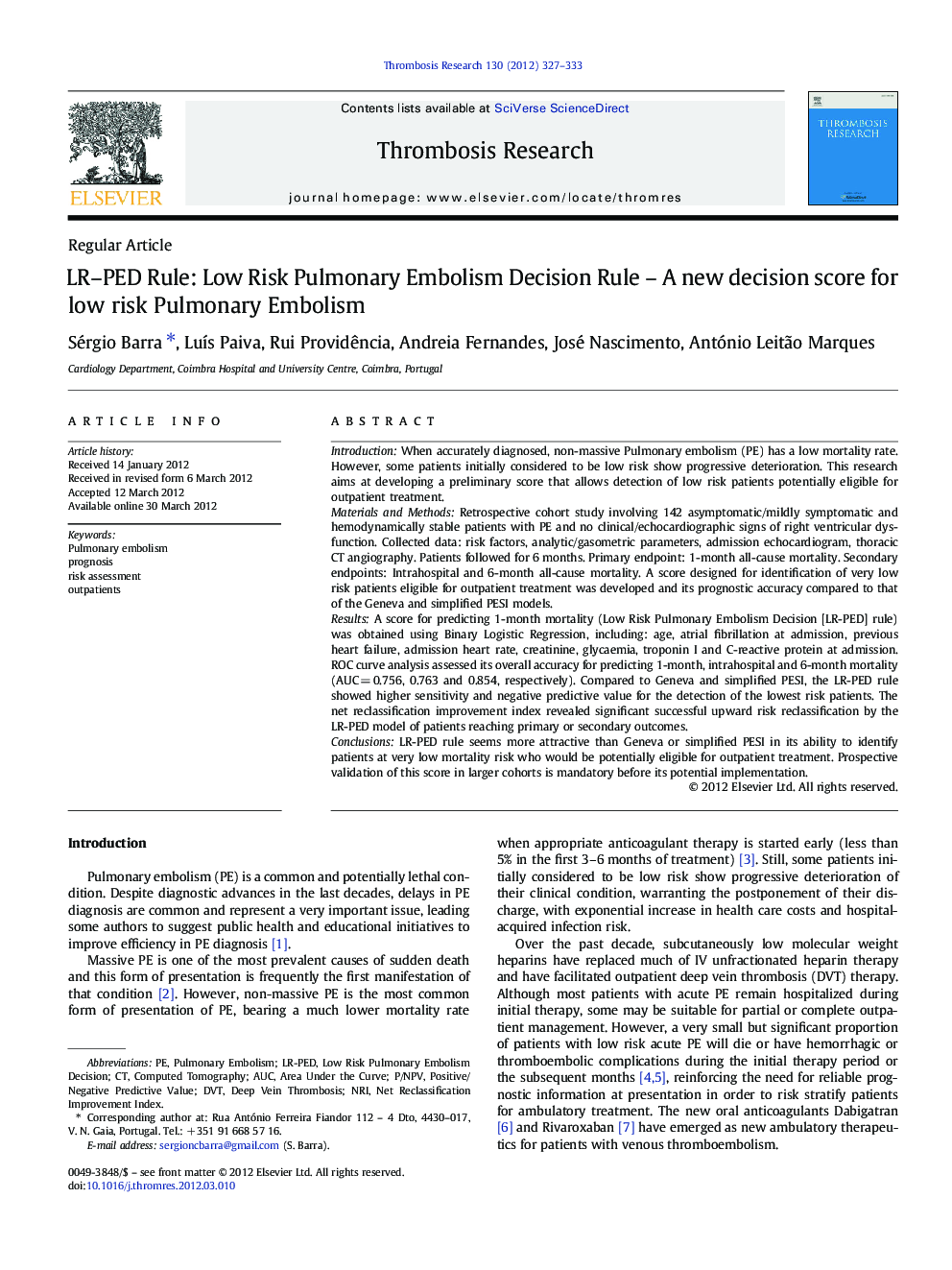| کد مقاله | کد نشریه | سال انتشار | مقاله انگلیسی | نسخه تمام متن |
|---|---|---|---|---|
| 3028256 | 1183005 | 2012 | 7 صفحه PDF | دانلود رایگان |

IntroductionWhen accurately diagnosed, non-massive Pulmonary embolism (PE) has a low mortality rate. However, some patients initially considered to be low risk show progressive deterioration. This research aims at developing a preliminary score that allows detection of low risk patients potentially eligible for outpatient treatment.Materials and MethodsRetrospective cohort study involving 142 asymptomatic/mildly symptomatic and hemodynamically stable patients with PE and no clinical/echocardiographic signs of right ventricular dysfunction. Collected data: risk factors, analytic/gasometric parameters, admission echocardiogram, thoracic CT angiography. Patients followed for 6 months. Primary endpoint: 1-month all-cause mortality. Secondary endpoints: Intrahospital and 6-month all-cause mortality. A score designed for identification of very low risk patients eligible for outpatient treatment was developed and its prognostic accuracy compared to that of the Geneva and simplified PESI models.ResultsA score for predicting 1-month mortality (Low Risk Pulmonary Embolism Decision [LR-PED] rule) was obtained using Binary Logistic Regression, including: age, atrial fibrillation at admission, previous heart failure, admission heart rate, creatinine, glycaemia, troponin I and C-reactive protein at admission. ROC curve analysis assessed its overall accuracy for predicting 1-month, intrahospital and 6-month mortality (AUC = 0.756, 0.763 and 0.854, respectively). Compared to Geneva and simplified PESI, the LR-PED rule showed higher sensitivity and negative predictive value for the detection of the lowest risk patients. The net reclassification improvement index revealed significant successful upward risk reclassification by the LR-PED model of patients reaching primary or secondary outcomes.ConclusionsLR-PED rule seems more attractive than Geneva or simplified PESI in its ability to identify patients at very low mortality risk who would be potentially eligible for outpatient treatment. Prospective validation of this score in larger cohorts is mandatory before its potential implementation.
Journal: Thrombosis Research - Volume 130, Issue 3, September 2012, Pages 327–333